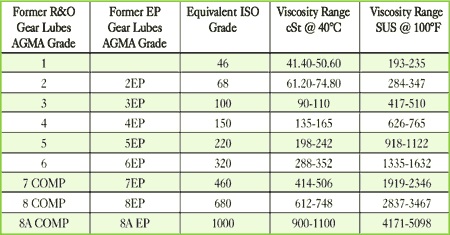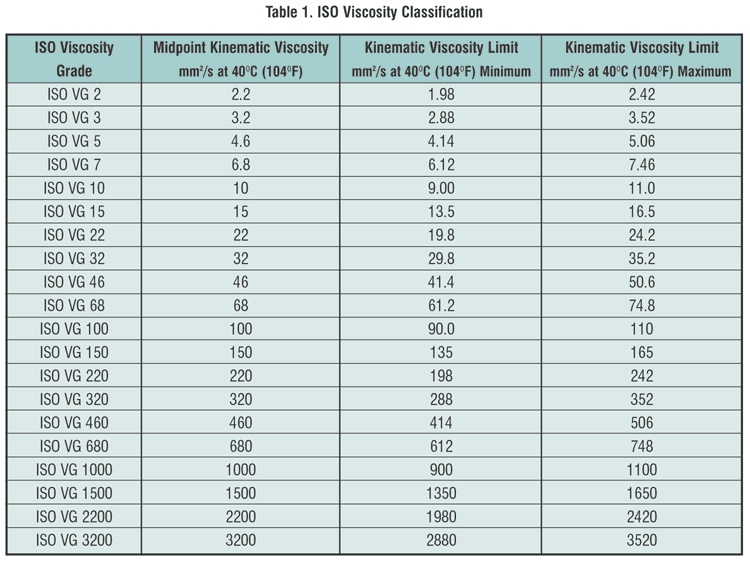Viscosity is a measurement of a lubricant’s resistance to flow. It is commonly thought of as how “thick” the oil is - the higher the viscosity the “thicker” the lubricant. Most laboratories report viscosity in centistokes (cSt) known as Kinematic Viscosity. The lubricant type dictates the temperature at which the test is performed. These charts of viscosity specifications are for NEW oils.
Viscosity may be the most important and least respected indicator of lubricant health. Changes in an oil’s viscosity are significant and should not be taken lightly. A few of the more common causes of significant changes in viscosity are oxidation, degradation, soot loading, water, fuel dilution, shearing and incorrect make-up oil added to the system.
Viscosity Index
Viscosity Index measures the change of viscosity with temperature. The higher the viscosity index, the smaller the relative change in viscosity with temperature.


|
SAE Viscosity No. Crankcase Oil Viscosity | |||||||||
Viscosity @ 100°C |
0W |
5W |
10W |
15W |
20W |
25W |
20 |
30 |
40 |
50 |
Minimum cSt |
3.8 |
3.8 |
4.1 |
5.6 |
5.6 |
9.3 |
5.6 |
9.3 |
12.5 |
16.3 |
Maximum cSt |
No Req. |
No Req. |
No Req. |
No Req. |
No Req. |
No Req. |
<9.3 |
<12.5 |
<16.3 |
<21.9 |
|
SAE Viscosity No. Gear Lubricants | |||||||
Viscosity @ 100°C |
75W |
80W |
85W |
90 |
110 |
140 |
190 |
250 |
Minimum cSt |
4.1 |
7.0 |
11.0 |
13.5 |
18.5 |
24.0 |
32.5 |
41.0 |
Maximum cSt |
No Req. |
No Req. |
No Req. |
<18.5 |
<24.0 |
<32.5 |
<41.0
|
No. Req. |